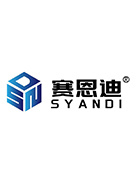
Understanding Small Connecting Rods: Key Components for Engine Efficiency
项目类型:
应用区域:
使用产品:
安装型号:
In the world of automotive engineering, the small connecting rod plays a critical role in the performance and efficiency of an engine. Often overlooked, this component is essential in transferring motion from the piston to the crankshaft, facilitating the engine's operation. Understanding the intricacies of small connecting rods can provide valuable insights for professionals in the automotive and aftermarket industries.
Firstly, the small connecting rod must be designed to withstand significant forces while maintaining a lightweight profile. Typically fabricated from high-strength materials such as aluminum alloys, steel, or titanium, these rods must balance durability and weight. The choice of material directly impacts the engine's overall efficiency; lighter rods contribute to faster engine response and improved fuel economy. It's crucial for professionals to stay abreast of advancements in material technology that may enhance the performance characteristics of small connecting rods.
There are various types of small connecting rods available, including forged, cast, and billet options. Each type has its unique manufacturing process and performance characteristics. Forged connecting rods are generally favored for high-performance applications due to their superior strength and fatigue resistance. On the other hand, cast connecting rods are more cost-effective and suitable for standard applications. Understanding these differences allows professionals to make informed decisions when selecting rods for specific engine builds.
Regular maintenance and inspection of small connecting rods are integral to ensuring engine longevity. Professionals should be aware of common failure modes, such as bending or cracking, which can result from excessive stress or poor lubrication. Implementing routine checks and adhering to manufacturer guidelines can help identify potential issues before they lead to costly repairs or engine failure.
Furthermore, the application of advanced technologies, such as computer-aided design (CAD) and finite element analysis (FEA), has revolutionized the development of small connecting rods. These tools enable engineers to optimize rod design for performance while minimizing weight. Staying updated on these technologies can enhance a professional's capability in selecting or designing connecting rods that meet modern engine demands.
In conclusion, small connecting rods are vital components in automotive engine systems, influencing overall performance and efficiency. By understanding their design, materials, and maintenance requirements, professionals can make informed choices that contribute to improved engine function and longevity. As the automotive industry continues to evolve, keeping abreast of the latest developments in small connecting rod technology will be crucial for any automotive career.
Firstly, the small connecting rod must be designed to withstand significant forces while maintaining a lightweight profile. Typically fabricated from high-strength materials such as aluminum alloys, steel, or titanium, these rods must balance durability and weight. The choice of material directly impacts the engine's overall efficiency; lighter rods contribute to faster engine response and improved fuel economy. It's crucial for professionals to stay abreast of advancements in material technology that may enhance the performance characteristics of small connecting rods.
There are various types of small connecting rods available, including forged, cast, and billet options. Each type has its unique manufacturing process and performance characteristics. Forged connecting rods are generally favored for high-performance applications due to their superior strength and fatigue resistance. On the other hand, cast connecting rods are more cost-effective and suitable for standard applications. Understanding these differences allows professionals to make informed decisions when selecting rods for specific engine builds.
Regular maintenance and inspection of small connecting rods are integral to ensuring engine longevity. Professionals should be aware of common failure modes, such as bending or cracking, which can result from excessive stress or poor lubrication. Implementing routine checks and adhering to manufacturer guidelines can help identify potential issues before they lead to costly repairs or engine failure.
Furthermore, the application of advanced technologies, such as computer-aided design (CAD) and finite element analysis (FEA), has revolutionized the development of small connecting rods. These tools enable engineers to optimize rod design for performance while minimizing weight. Staying updated on these technologies can enhance a professional's capability in selecting or designing connecting rods that meet modern engine demands.
In conclusion, small connecting rods are vital components in automotive engine systems, influencing overall performance and efficiency. By understanding their design, materials, and maintenance requirements, professionals can make informed choices that contribute to improved engine function and longevity. As the automotive industry continues to evolve, keeping abreast of the latest developments in small connecting rod technology will be crucial for any automotive career.
Summary:
In the world of automotive engineering, the small connecting rod plays a critical role in the performance and efficiency of an engine. Often overlooked, this component is essential in transferring motion from the piston to the crankshaft, facilitating the engine's operation. Understanding the intricacies of small connecting rods can provide valuable insights for professionals in the automotive and
Author:
Source:
Date:
2025-07-05
Other information





